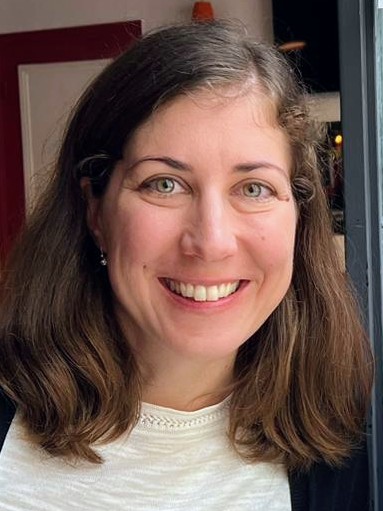Invited Lectures
Monday 15th September 10:00–10:30, Green Hall
Ambler Lecture:
Milan Brazdil

HFOs, VHFOs and beyond
mbrazd@med.muni.cz
1) Brno Epilepsy Center, Department of Neurology, St Anne's University Hospital and Faculty of Medicine, Masaryk University, Brno, Czech Republic, member of ERN EpiCARE. 2) Central European Institute of Technology Masaryk University, Brno, Czech Republic
Milan Brazdil, MD, PhD is Professor of Neurology,
Chair of the Department of Neurology in St. Anne´s University Hospital Brno,
Czech Rep. and Head of the Behavioral and Social Neuroscience Research Group in
CEITEC Masaryk University. He has extensive expertise in clinical epileptology,
epilepsy surgery, invasive EEG, and behavioral neuroscience (mainly
intracranial ERPs and functional MRI). He is a co-founder of Brno Epilepsy
Centre and its Director. Currently, he serves as a president of the Czech
Society for Clinical Neurophysiology and past-president of the Czech chapter of
International League against Epilepsy. In 2016 he co-chaired the 12th European
Congress on Epileptology and was a member of the International Scientific and
Organizing Committees for European Epilepsy Congresses 2014 and 2018. Milan Brazdil
has authored more than 200 peer-reviewed articles, and his h-index is 35.
Using navigation-related activity in the rodent brain to study memory
znavrati@uci.edu
University of California-Irvine, Irvine, CA, USA
Episodic memory does not seem like something that can be studied using rodent models, but decades of research have shown that there are many parallels between the neural mechanisms and circuitry for navigation and human memory for events. There are two complementary aspects of episodic memory: pattern completion – recalling all features of an event from incomplete information, and pattern separation – storing separate events without overlap, despite similarities in features. The way that memory is expressed depends on the current requirements of the animal – sometimes pattern separation is preferred, e.g. to encode a separate episode, but sometimes generalization is needed, e.g. to make a prediction. According to complementary learning systems theory, these dueling needs are balanced by two separate storage systems: the hippocampus and neocortex. This talk will focus on recent research about how neural activity in the rodent brain encodes space, and what neural "remapping" of these spaces can teach us about pattern separation and completion processes. Several studies show that the way in which an animal initially navigates an environment can dramatically impact the way the environment is encoded in the hippocampus.
Less is known about pattern completion processes in the neocortex. Recent studies have found that several neocortical areas, including the retrosplenial cortex (RSC), contain sparse neural coding correlated to spatial location in one-dimensional environments. This suggests that the hippocampus projects spatial information out to many neocortical areas. Lesions of the hippocampus indeed prevented spatial information from developing in RSC in novel environments, but did not prevent expression spatial maps formed in familiar environments prior to the lesion. We studied the neural activity in RSC during exploration of novel virtual environments, and found that many, but not all, features of hippocampal spatial maps are reproduced in the RSC. We conclude that neural activity in RSC is highly dependent on the current and prior behavior of the animal, as well as inputs from the hippocampus.
About:
Žaneta Navrátilová is an Assistant Project Scientist at UC Irvine working with Dr. Bruce McNaughton. She studies the interactions of hippocampus and neocortex in memory formation and consolidation. She received her PhD at the University of Arizona, USA, and did her postdoctoral work with Dr. Francesco Battaglia at Radboud University Nijmegen, Netherlands. She has also worked at KU Leuven, Belgium, and the University of Lethbridge, Alberta, Canada. Her work aims to understand how memory is stored and structured in the mammalian brain. To study these mechanisms, she has used computational models as well as techniques to monitor the activity of large populations of individual neurons in behaving animals, including electrophysiology and calcium imaging. She is motivated to advance scientific understanding of the brain for future generations, and to disseminate that knowledge.
Relevant publications:
Navratilova, Z., Banerjee, D., Muqolli, F., Zhang, J., Gandhi, S.P., McNaughton, B.L. (2023). Pattern Completion and Rate Remapping in Retrosplenial Cortex. Research Square. https://doi.org/10.21203/rs.3.rs-2736384/v1.
Kudithipudi D, Aguilar-Simon M, Babb J, Bazhenov M, Blackiston D, Bongard J, Brna A, Chakravarthi Raja S, Cheney N, Clune J, Daram A, Fusi S, Helfer P, Kay L, Ketz N, Kira Z, Kolouri S, Krichmar JL, Kriegman S, Levin M, Madireddy S, Manicka S, Marjaninejad A, McNaughton B, Miikkulainen R, Navratilova Z, Pandit T, Parker A, Pilly PK, Risi S, Sejnowski TJ, Soltoggio A, Soures N, Tolias AS, Urbina-Melendez D, Valero-Cuevas FJ, van de Ven GM, Vogelstein JT, Wang F, Weiss R, Yanguas-Gil A, Zou X, Siegelmann H. (2022). Biological underpinnings for lifelong learning machines. Nature Machine Intelligence. 4(3):196-210.
Navratilova Z, Godfrey KB, McNaughton BL. (2016). Grids from bands, or bands from grids? An examination of the effects of single unit contamination on grid cell firing fields. J Neurophysiol 115:992–1002. doi: 10.1152/jn.00699.2015.
Nguyen TK, Navratilova Z, Cabral H, Wang L, Gielen G, Battaglia FP, Bartic C. (2014). Closed-loop optical neural stimulation based on a 32-channel low-noise recording system with online spike sorting. J. Neural Engineering, 11(4):046005. doi: 10.1088/1741-2560/11/4/046005.
Navratilova Z, McNaughton BL (2014). Models of Path Integration in the Hippocampal Complex. In: Derdikman D, Knierim JJ (eds.). Space, Time and Memory in the Hippocampal Formation. Springer, Vienna, pp 191–224.
Navratilova Z, Hoang LT, Schwindel CD, Tatsuno M and McNaughton BL (2012). Experience-dependent firing rate remapping generates directional selectivity in hippocampal place cells. Front. Neural Circuits 6:6. doi: 10.3389/fncir.2012.00006.
Navratilova Z, Giocomo LM, Fellous JM, Hasselmo ME, McNaughton BL. (2012). Phase precession and variable spatial scaling in a periodic attractor map model of medial entorhinal grid cells with realistic after-spike dynamics. Hippocampus, 22: 772–789. doi: 10.1002/hipo.20939. (first published online, 11 April 2011).


